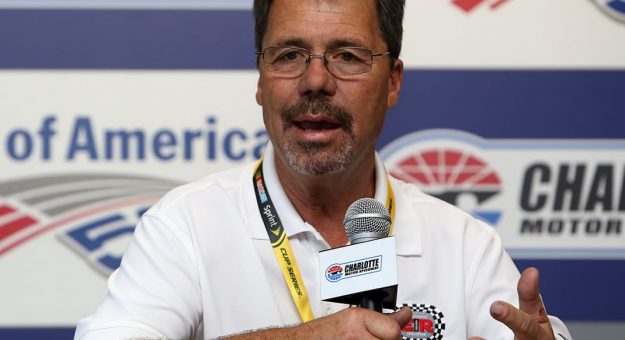It’s been 30 years since Ernie Irvan celebrated the biggest victory of his NASCAR career.
Now 61, Irvan lives in Ocala, Fla. — roughly a 90-minute drive from Daytona Int’l Speedway, the site of the Daytona 500 that Irvan won on Feb. 17, 1991. Between sweeping his shop floor and tending to his pet poodle, Irvan sat down with SPEED SPORT in December to recall the race that catapulted an upstart-driver from Salinas, Calif., to national stardom.
Irvan’s Daytona story begins 11 months earlier when he signed with Morgan-McClure Motorsports in March 1990. At the time, Irvan had zero top-five finishes in 62 starts for car owners Marc Reno, D.K. Ulrich and Junie Donlavey. The 31-year-old Irvan felt his new crew chief at Morgan-McClure, Tony Glover, needed a scouting report on his new driver.
“I suck at road courses and I don’t have any clue how to draft,” Irvan told Glover.
It was an honest self-assessment, but Glover disregarded it. He knew Irvan’s potential.
“You just haven’t sat in the right car,” Glover replied.
Irvan debuted later that week at Atlanta Motor Speedway, where he finished an impressive third — one of the best results in the Morgan-McClure team’s history and easily the best performance of Irvan’s career.
After a mid-July switch from Oldsmobiles to Chevrolets, Irvan captured his — and the team’s — first victory at Bristol (Tenn.) Motor Speedway in August. Irvan led 120 of 500 laps and out-ran defending series champion Rusty Wallace in the closing laps. Irvan didn’t expect his first win to come at Bristol — or, frankly, to come at all — but the skills he’d honed as a short-track star at Concord (N.C.) Speedway in the 1980s were on full display when he needed them most.
Irvan followed the win with a second-place finish in the Southern 500 at Darlington (S.C.) Raceway and four additional top-10 results in the season’s final five races.
Ending 1990 on a high note gave Irvan and Glover plenty of momentum.

Both men felt optimistic when the No. 4 Kodak Film Chevrolet hauler departed its Abingdon, Va., base in February 1991. Irvan’s car had speed during pre-season testing, but no one in their right mind was picking Ernie Irvan to win the Daytona 500.
Most bets were on defending series champion Dale Earnhardt, who’d come one agonizing lap from winning his first 500 the previous year. Surely, they figured, nothing could stop Earnhardt in 1991.
Irvan didn’t mind being an afterthought. Hell, Irvan had always been an afterthought.
“It didn’t bother me,” Irvan recalled. “We weren’t mad that they were choosing Dale to win it. I mean, how many times had he come close to winning it by then? We were really fast in testing in January, but you never know you’re fast until you get down there for the race and you look at the time sheets.”
Irvan remained one of the fastest drivers throughout time trials. A 46.003-second, 195.64 mph qualifying lap — faster than Earnhardt — put Irvan outside the front row. He missed Davey Allison’s pole-winning lap by less than a tenth of a second. Was Irvan really quicker than Earnhardt?
Two 125-mile qualifying races, which set the field beyond the front row, seemed to answer the question. Irvan started first for his 125-miler, lost the lead on the first lap and watched as Earnhardt led all 50 laps.
Irvan was unfazed. Thursday didn’t pay the big money and it didn’t hand out the big trophy.
“We were confident that we had a really good car,” Irvan said. “It was a matter of me being able to do the right things despite not having much experience drafting. We felt like that if we put it all together, there should be no reason we couldn’t win the race.”
Glover wanted Irvan’s car to be slippery enough to pass people on the straightaways and stable enough to hold them off in the turns.
“If we can get to where you’re running flat-out all day, we can win,” Glover told Irvan.
Click below to continue reading.
